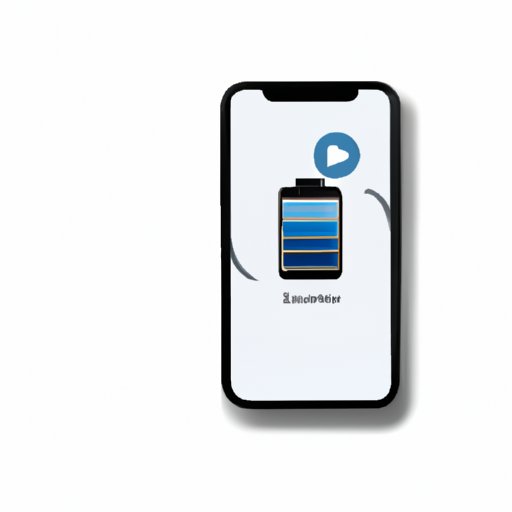Introduction
Are you struggling with a lack of storage space on your iPhone? You are not alone. Many iPhone users face this issue, and it can be frustrating when you cannot take pictures or download your favorite apps due to low storage. This article will provide you with a comprehensive guide on how to free up space on your iPhone and avoid running out of storage in the future.
Clearing out Unused Apps
The first step to freeing up storage on your iPhone is by deleting unused apps. Scroll through your apps, and identify the ones that you never use. Uninstalling them will create more space on your iPhone. Follow these simple steps:
- Hold down the app icon until all the icons begin to shake.
- Tap on the ‘x’ on the app you wish to delete.
- Tap “Delete” to confirm the deletion of the app.
You should regularly do this exercise to keep your iPhone clean, organized, and with adequate storage space.
Deleting Old Messages
Another way to free up storage space on your iPhone is by deleting old text messages. Inevitably, old messages accumulate over time, consuming unnecessary space. It’s important to delete them regularly. To delete old messages, follow these simple steps:
- Go to the Messages app and select the conversation you want to delete.
- Swipe left on the conversation.
- Tap “Delete.”
You may also want to minimize message attachments by going to Settings > Messages > Keep Messages. Set it to ’30 days’ or ‘1 year’ rather than ‘Forever’.
We recommend you do this regularly to ensure that old conversations don’t eat up your iPhone storage space.
Using iCloud to Store Media
Using iCloud to store media such as photos, videos and music is another way to free up iPhone storage space. iCloud automatically stores your media in the cloud, allowing you to access it from any other device with access to your iCloud account. Here’s how to set up iCloud for photo and video storage:
- Go to Settings > Your name > iCloud
- Tap on Photos and select ‘Optimize iPhone Storage’
- Make sure your iPhone is connected to Wi-Fi and power supply for iCloud to upload your photos and videos.
While using iCloud is convenient, it may not be the best solution for storing all your media. It comes at a cost based on how much storage you need, and sometimes it can be slower to access your media files compared to storing them locally on your device. Only store your most crucial files on iCloud, and you can always delete them from your phone once you’re done with them.
Offloading Apps
If you don’t want to delete an app entirely but wish to free up storage space, you can ‘offload’ it. This feature removes the app itself, but it keeps any related documents and data. If you reinstall offloaded apps, it will restore your old data and settings as they were when you offloaded it. Here’s how to offload your app:
- Go to Settings > General > iPhone Storage.
- Scroll down to ‘Recommendations’, where you’ll see apps that aren’t currently being used.
- Select the app you want to offload and tap ‘Offload App’.
Offloading an app is an excellent solution when you have limited storage space, and you don’t need an app for an extended period. You can always reinstall it later without losing any data.
Deleting Downloaded Content
You can as well free up storage on your iPhone by deleting downloaded content such as podcasts, movies, and TV shows. You can easily locate all your downloaded content by going to Settings > General > iPhone Storage. Select ‘TV,’ ‘Music,’ or ‘Podcasts’, and you’ll see a list of downloaded content. Tap ‘Delete’ next to any items you want to remove, and it will be removed from your iPhone storage.
You can always stream or download the same content again if you need it. Alternatively, you can choose not to download large content to your iPhone and stream it only when you need it. This will help reduce capacity usage and free up storage on your iPhone.
Enabling ‘Optimize iPhone Storage’
You can enable ‘Optimize iPhone Storage’ to help you save storage space. This feature automatically stores full-resolution photos and videos on iCloud and keeps device-optimized versions on your iPhone. This functionality allows you to keep more photos and videos on your phone while freeing up storage space.
To enable this feature, follow these steps:
- Go to Settings > Your name > iCloud
- Tap on Photos and select ‘Optimize iPhone Storage’
While ‘Optimize iPhone Storage’ is a good feature, you might miss viewing your full-resolution photos and videos on your device. Therefore, we recommend you enable the feature if you need adequate storage space and don’t want to pay for more storage on iCloud.
Conclusion
By following these steps, you can free up storage space on your iPhone and keep it from filling up too quickly. Regularly checking and optimizing your device for storage space will help keep your iPhone more organized and faster. Make it a habit to do them often, and you won’t have to worry about running out of storage space again. If after following all these steps, you still experience storage issues, visit the Apple Store Support or Apple Support Community page for further assistance.
